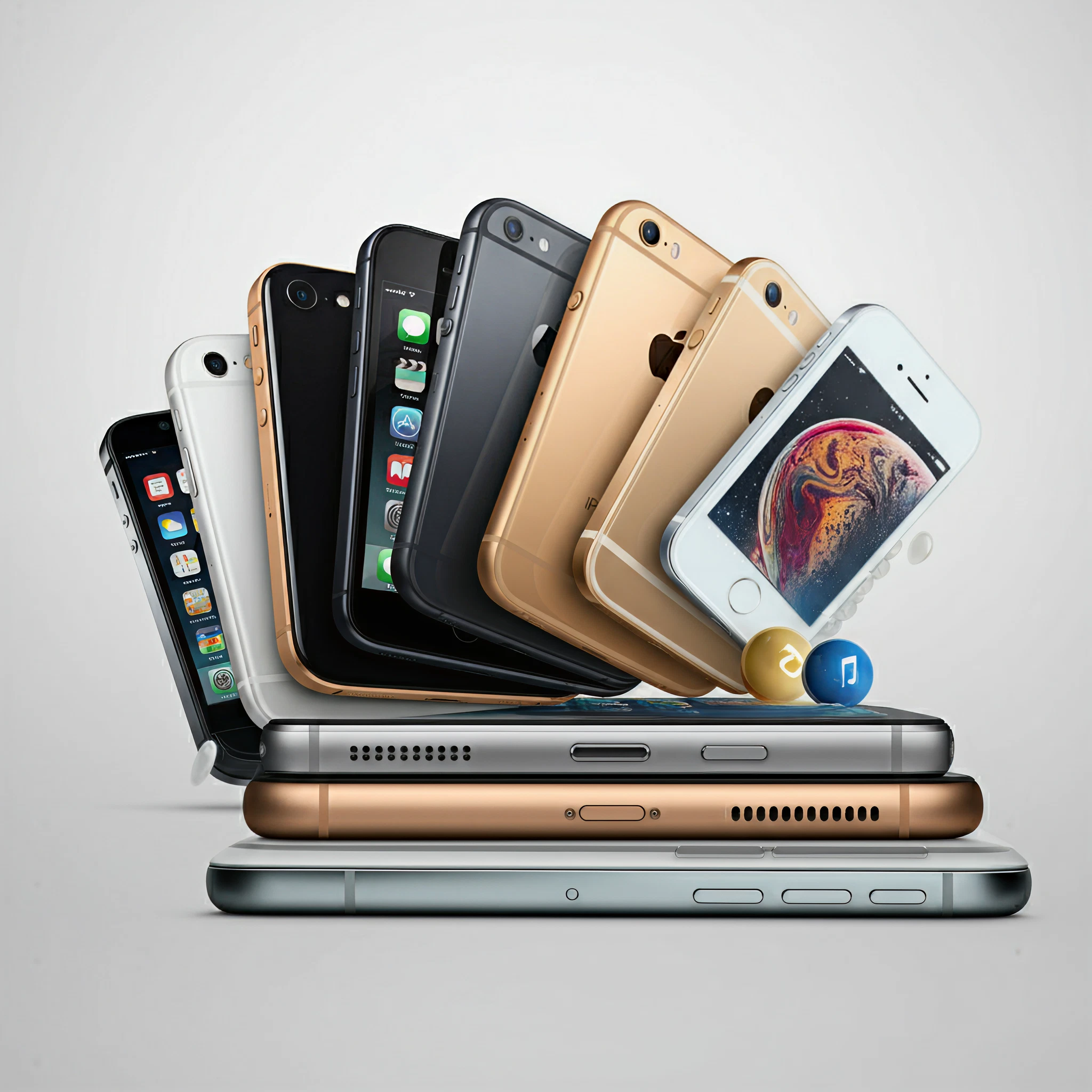The iPhone is more than just a smartphone; it’s a cultural phenomenon that has revolutionized the way we interact with technology. Since its debut in 2007, Apple’s iPhone lineup has continually redefined consumer expectations with groundbreaking innovation. This guide will take you through all types of iPhones released to date, explore how the models have evolved, and highlight features that continue to make them the first choice for millions worldwide.
The Evolution of iPhones
Since the original iPhone was introduced by Steve Jobs in 2007, Apple has launched over 30 models across its standard, Plus, Pro, mini, and SE lines. Through these years, the iPhone has grown from a basic 3.5-inch touchscreen device into a powerhouse of cutting-edge technology, consistently leading the industry in design, performance, and functionality.
Here’s a look at notable iPhone lineages and how they’ve shaped Apple’s legacy in the smartphone market.
1. The Original iPhone (2007)
The first iPhone changed everything. Featuring a 3.5-inch screen, a 2-megapixel camera, and up to 16GB of storage, it introduced the multitouch interface that defined all smartphones in subsequent years.
Key Features:
- 3.5-inch display
- 2-megapixel camera
- Only EDGE (2G) connectivity
2. iPhone 3G to iPhone 3GS
The iPhone 3G was the first to offer 3G connectivity, while the 3GS brought significant speed improvements. This era marked the debut of the App Store and GPS navigation.
Key Features:
- App Store launch (2008)
- GPS navigation
- Improved processor in 3GS
3. iPhone 4 & iPhone 4S
iPhone 4 introduced the Retina display and a front-facing camera for video calls, while the 4S brought the iconic Siri voice assistant.
Key Features:
- 5-megapixel rear camera
- Retina Display
- Siri voice assistant (iPhone 4S)
4. iPhone 5 to iPhone 5S/5C
The iPhone 5 marked Apple’s move to larger 4-inch screens, a thinner design, and the Lightning connector. The 5S introduced Touch ID, the A7 chip, and the first true gold iPhone.
Key Features:
- 4-inch Retina Display
- 64-bit A7 chip (iPhone 5S)
- Touch ID and fingerprint sensor
5. iPhone 6, 6 Plus, and 6S Series
The iPhone 6 and 6 Plus introduced larger screen sizes (4.7-inch and 5.5-inch respectively), an improved camera, and NFC for Apple Pay.
Key Features:
- Apple Pay (NFC tech)
- 3D Touch (iPhone 6S)
- Live Photos
6. iPhone 7 & iPhone 7 Plus
With no headphone jack, the iPhone 7 range made waves. The 7 Plus brought dual cameras for optical zoom and portrait mode photography.
Key Features:
- Dual-camera system (7 Plus)
- Water resistance
- Improved battery life
7. iPhone X Series
Celebrating the 10th anniversary, the iPhone X introduced OLED displays, Face ID, and the all-screen design we know today.
Key Features:
- Face ID
- Super Retina OLED display
- Portrait Lighting mode
8. iPhone 11, 11 Pro, and 11 Pro Max
The iPhone 11 trio focused on high-performance cameras, including Night Mode and ultra-wide lenses. These models solidified Apple’s leadership in smartphone photography.
Key Features:
- Triple camera setup (Pro models)
- A13 Bionic chip
- Night mode
9. iPhone 12 Series
Apple’s iPhone 12 line introduced 5G connectivity and the Ceramic Shield for increased durability. The lineup also brought back flat-edged designs reminiscent of the iPhone 4.
Key Features:
- 5G connectivity
- MagSafe for wireless accessories
- Ceramic Shield protection
10. iPhone 13 Series
With improved battery life and cinematic mode for video enthusiasts, the iPhone 13 series catered to content creators.
Key Features:
- Cinematic mode
- A15 Bionic chip
- Up to 1TB storage (13 Pro Max)
11. iPhone 14 Series
The iPhone 14 Pro introduced a major design change with Dynamic Island, turning a functional notch into an interactive element on the screen. Emergency SOS via satellite also made its debut.
Key Features:
- Dynamic Island (14 Pro Models)
- Crash Detection and Emergency SOS
- Always-On Display
12. iPhone 15 Series
Apple’s latest iPhone 15 line brings the adoption of USB-C connectors, titanium frames for Pro models, and an upgraded 48-megapixel camera.
Key Features:
- USB-C charging
- A17 Pro chip (15 Pro and Pro Max)
- Telephoto camera with up to 5x zoom (Pro Max)
Comparing All iPhone Models
When comparing all types of iPhones, a few key factors stand out that drive customer choices year after year. These can be broadly broken into categories like screen size, camera capabilities, processing power, design iterations, and storage options.
| Model | Screen Size | Processor | Camera | Storage Options |
|---|---|---|---|---|
| iPhone 15 Pro Max | 6.7-inch | A17 Pro | 48MP Main w/ Telephoto | 256GB – 1TB |
| iPhone SE (2022) | 4.7-inch | A15 Bionic | 12MP Single Camera | 64GB – 256GB |
| iPhone 13 Mini | 5.4-inch | A15 Bionic | Dual-camera system | 128GB – 512GB |
Why the iPhone is Iconic
The success of iPhones boils down to three key aspects:
- Performance – Apple’s A-series chips consistently outperform competitors.
- User Experience – iOS provides a seamless and intuitive experience for users.
- Design Excellence – Sleek, premium materials have turned the iPhone into a status symbol.
Which iPhone is Right for You?
Choosing the perfect iPhone depends on your priorities. For photographers, the iPhone Pro models offer unparalleled camera features. For those who prefer compact devices, options like the iPhone 13 Mini are perfect. Finally, the iPhone SE is ideal for budget-conscious buyers who still want Apple’s superb ecosystem.
Start Your iPhone Journey
Whether you’re upgrading your current device or buying your first Apple product, one thing’s for sure—the iPhone offers something for everyone. Explore Apple’s catalog now and find the iPhone that fits your needs perfectly.








